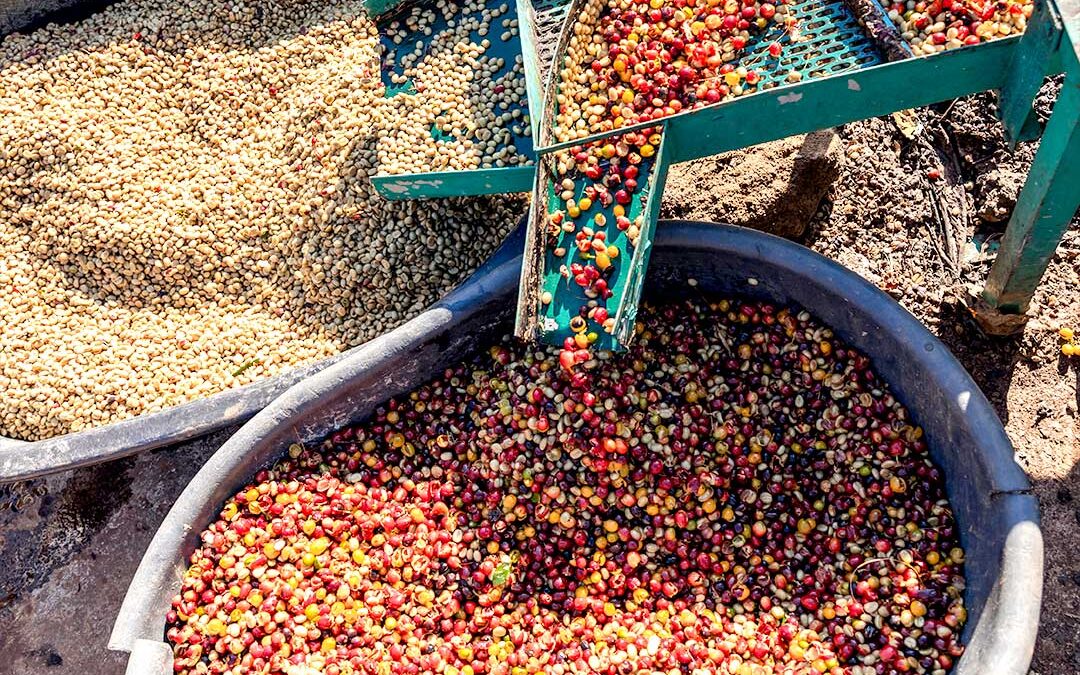Original article: Anti-inflammatory Properties of Coffee Husk
Author: Patricia Matey
If coffee is frequently praised for its numerous health benefits, its husk is no exception. Now, Spanish and U.S. scientists have published a new study confirming the anti-inflammatory potential of the coffee husk, as well as its ability to improve insulin levels. The husk refers to the outer fruit layer of the coffee cherry, which has become trendy in Western countries as a base for various beverages.
Previous research has already highlighted its biological properties. For instance, a study published in the journal Food Science and Technology, conducted by scientists from the University of Granada (UGR) and the Zaidín Experimental Station (CSIC), evaluated the biological properties of coffee production by-products, such as coffee grounds (CG) and coffee silverskin (CS)—the latter known in Spanish as cascarilla.
According to the researchers, these by-products are very rich in fiber and phenolic compounds, all of which are beneficial to human health. They also contain high levels of brown-colored compounds called melanoidins (M), which contribute to coffee’s color and offer various health-promoting properties.
Coffee by-products are rich in phenolic compounds and fiber.
The new study, carried out by scientists from the Institute of Food Science Research (CIAL) and the Department of Food Science and Human Nutrition at the University of Illinois, notes: “Overweight and obesity are defined as the excessive accumulation of fat that can impact health, triggered by the over-storage of energy as triglycerides (TAG) in adipose tissue.”
Around 13% of the global adult population is obese, which is a major risk factor for chronic diseases, including type 2 diabetes. Obesity is associated with a state of chronic low-grade inflammation, which impairs insulin signaling. Moreover, insulin resistance has been shown to further increase inflammation.
The Value of Waste
The researchers focused on the anti-inflammatory potential of compounds found in the silverskin (a by-product produced in large volumes during hulling and roasting processes) and the coffee husk, not only for their potential to relieve chronic diseases but also to add value to what is typically considered waste from the coffee processing industry.
The study, published in Food and Chemical Toxicology, shows that when fat cells from mice were treated with water-based extracts from coffee silverskin, two phenolic compounds—protocatechuic acid and gallic acid in particular—significantly reduced fat-induced inflammation in the cells, improved glucose uptake, and enhanced insulin sensitivity.
The findings are promising for these bioactive compounds, especially when consumed as part of the diet, as a strategy to prevent chronic diseases associated with obesity, such as type 2 diabetes and cardiovascular diseases.
“In my lab, we’ve studied bioactive compounds from various foods and observed their benefits in preventing chronic illnesses,” says Elvira González de Mejía, co-author of the study. “This coffee material is particularly interesting because of its composition. It’s been proven to be non-toxic, and these phenolics have a very high antioxidant capacity,” she adds.
For this study, the researchers analyzed two types of cells: macrophages (immune response cells) and adipocytes (fat cells), and assessed the combined effects of the extracts and individual pure phenolics on adipogenesis—the production and metabolism of fat cells—and related hormones. They also examined their effect on inflammatory pathways.
When inflammation related to obesity occurs, both types of cells interact in a loop, promoting oxidative stress and disrupting glucose absorption, worsening the condition.
To break this cycle and prevent chronic disease, the researchers aim to eliminate or significantly reduce inflammation to allow for proper glucose absorption and maintain healthy insulin-producing cells.
Miguel Rebollo-Hernanz, from CIAL and co-author of the study, explains how the results shed light on the mechanism of action of these extracts and pure compounds and their potential effectiveness in future human or animal studies.
For the experiment, fat cells and immune cells were cultured together to mimic the real-life interaction between them.
“We tested two extracts and five pure phenolics, and we observed that phenolics—particularly protocatechuic acid and gallic acid—were able to block fat accumulation in adipocytes mainly by stimulating lipolysis [fat breakdown], but also by promoting the formation of brown adipose tissue (BAT)—the body’s primary heat-generating organ, also an endocrine organ that releases signaling factors to activate fat and carbohydrate metabolism,” explains Rebollo-Hernanz.
Fat Burners
Significantly, BAT is known as a fat burner, containing more mitochondria, the key organelles in cells that convert nutrients into energy. In the study, researchers found that some phenolics could stimulate the browning of fat cells, increasing mitochondrial content in adipocytes.
“Macrophages are present in adipose tissue, and when this tissue grows excessively, their interactions trigger inflammation and oxidative stress,” notes Rebollo-Hernanz. “We found that these compounds could reduce the secretion of inflammatory factors and lower oxidative stress.”
When macrophages interact with fat cells, the latter contain fewer mitochondria and lose their ability to burn lipids. By using these phenolic compounds, researchers found that this macrophage-induced impact on fat cells was completely blocked. The adipocytes preserved their function.
“The compounds we tested were able to inhibit inflammation in macrophages, which in turn reduced inflammatory markers in adipocytes,” says De Mejía. “We also observed inhibition of inflammation-related markers directly in the fat cells. Glucose uptake improved, as the glucose transporters were present. And this went both ways.”
“Now we know that in the presence of these compounds, we can reduce inflammation, reduce adipogenesis, and break the cycle in which both cell types promote harmful compounds that negatively affect the system,” she adds.
Environmental Impact
Researchers also highlighted the environmental benefits of using coffee bean by-products. During coffee processing, the bean is separated from the husk—the outer layer. After roasting, the silverskin is removed.
“It’s a major environmental issue because when this husk is separated during processing, it usually stays in the field fermenting, molding, and causing problems,” explains De Mejía. Worldwide, 1,160,000 tons of coffee husk are left in the fields annually, which can lead to pollution, the researchers emphasize.
